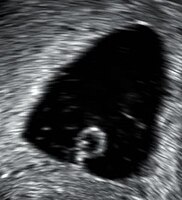
Photo from wikipedia
BACKGROUND Chronic arsenic exposure has been associated with pregnancy complications and reduced fetal growth in populations where total arsenic exposure exceeds 50 μg/L. However, the potential effect on pregnancy outcomes remains… Click to show full abstract
BACKGROUND Chronic arsenic exposure has been associated with pregnancy complications and reduced fetal growth in populations where total arsenic exposure exceeds 50 μg/L. However, the potential effect on pregnancy outcomes remains unclear at lower levels of arsenic exposure, such as those most commonly observed in the United States. OBJECTIVES We evaluated the associations between arsenic exposure during pregnancy with fetal growth and risk of pregnancy complications using data from mother-infant pairs participating in the National Children's Study. METHODS Prenatal arsenic exposure was measured using maternal urine collected during the third trimester. Information about pregnancy complications was abstracted from medical records. Fetal growth, including gestational age, birth weight, birth length, head circumference, and ponderal index, was ascertained through physical measurement at birth and extracted from medical records. RESULTS Medians [interquartile range (IQR)] of maternal urinary total arsenic and dimethylarsinic acid (DMA) were 7.77 μg/L (7.98) and 3.44 μg/L (3.13), respectively. Each increase in IQR of prenatal total arsenic level was associated with greater birth length (+0.28 cm; 95% CI: 0.14, 0.42), greater head circumference (+0.12 cm; 95% CI: 0.04, 0.21), and lower ponderal index (-0.37 kg/m3; 95% CI: -0.58, -0.17). Similar results were obtained for levels of prenatal DMA. Tests for multiplicative interaction indicate that prenatal urinary DMA was negatively associated with gestational age among female infants (-0.44 week decrease in gestational age estimated for each IQR increase in DMA; 95% CI: -0.84, -0.05), while no association was observed among male infants (pinteraction = 0.02). No significant associations were detected between arsenic and birth weight or pregnancy complications. CONCLUSIONS Higher prenatal arsenic exposure was associated with longer birth length, greater head circumference, and lower ponderal index. Associations between arsenic and gestational age may be modified by infant sex.
Journal Title: Environmental research
Year Published: 2020
Link to full text (if available)
Share on Social Media: Sign Up to like & get
recommendations!